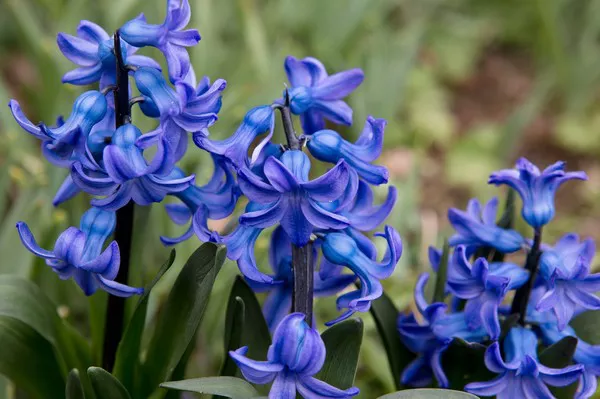Orchids, with their exquisite beauty and unique charm, are often considered the epitome of floral elegance. However, coaxing these exotic flowers into reblooming can be a nuanced and rewarding endeavor. Whether you’re a seasoned orchid enthusiast or a newcomer to these captivating plants, this comprehensive guide will provide you with valuable insights and step-by-step instructions on how to get orchids to reflower, ensuring a continuous display of their enchanting blossoms.
Understanding the Orchid Lifecycle
Blooming Cycles: Orchids, like many plants, go through natural blooming cycles. Understanding the lifecycle of your orchid is crucial in determining the right care it needs to initiate and sustain reflowering.
Rest Periods: After an orchid has finished blooming, it enters a rest period. During this time, the plant redirects its energy to root and leaf growth. Patience is key as orchids may not immediately show signs of reflowering.
Environmental Factors: Orchids are highly sensitive to changes in their environment. Factors such as light, temperature, and humidity play a significant role in triggering the flowering process.
Optimal Conditions for Orchid Reflowering
Lighting Requirements:
Indirect Light: Most orchids thrive in bright, indirect light. Place your orchid near a window with filtered sunlight, avoiding direct exposure to harsh midday sun.
Duration: Orchids generally require 12-14 hours of light per day. Supplemental artificial light can be used during shorter days or in areas with limited natural light.
Temperature Considerations:
Day and Night Temperature Drops: Many orchids, including popular varieties like Phalaenopsis, require a temperature drop of 10-15°F (5-8°C) between day and night to stimulate blooming.
Seasonal Variation: Mimic the natural seasonal variation by adjusting temperatures. Warmer days and cooler nights help simulate the conditions orchids experience in their native habitats.
Humidity Levels:
Maintain High Humidity: Orchids thrive in environments with high humidity. Use a humidity tray or a humidifier to maintain humidity levels between 50-70%.
Mist Occasionally: Lightly misting your orchid’s leaves can help create a more humid microenvironment, especially in dry indoor settings.
Proper Watering Practices:
Avoid Overwatering: Orchids are susceptible to root rot, so it’s essential to allow the growing medium to dry out between waterings.
Water Quality: Use lukewarm, distilled water or rainwater to avoid mineral buildup in the growing medium.
Hydration Frequency: Water your orchid when the growing medium feels nearly dry. Adjust the frequency based on the specific needs of your orchid and the environmental conditions.
Pruning and Maintenance for Orchid Reflowering
Remove Spent Blooms:
Prompt Deadheading: Once the flowers on an orchid have wilted and faded, promptly remove the spent blooms. This encourages the plant to redirect energy to potential new flower spikes.
Sterilize Tools: Use sterilized scissors or pruning shears to prevent the spread of diseases. Wipe the blades with rubbing alcohol before and after each use.
Trimming Aerial Roots:
Aesthetic Pruning: If your orchid has long aerial roots that have become unruly, trim them back for a neater appearance.
Avoid Cutting Healthy Roots: Be cautious not to trim healthy roots that are essential for nutrient absorption.
Repotting as Needed:
Check the Growing Medium: Assess the condition of the orchid’s growing medium. If it has broken down or become overly compacted, consider repotting.
Optimal Time for Repotting: The period after flowering is an opportune time for repotting. Use a well-draining orchid mix and inspect the roots for signs of health.
Special Considerations for Specific Orchid Varieties
Phalaenopsis Orchids:
Unique Blooming Pattern: Phalaenopsis orchids often produce flower spikes from nodes along the stem, not just at the top. Encourage new spikes by providing the right conditions.
Low Light Tolerance: Phalaenopsis orchids can tolerate lower light levels, making them suitable for various indoor environments.
Cattleya Orchids:
Distinctive Flowering Pattern: Cattleya orchids typically produce a single flower spike per pseudobulb. Ensure proper care during the growth phase for consistent blooming.
Bright Light Requirements: Cattleyas thrive in bright, indirect light. Provide the necessary light levels to promote flowering.
Dendrobium Orchids:
Cooling Period Requirement: Dendrobium orchids, especially the nobile types, benefit from a cooling period with lower temperatures to trigger blooming.
Regular Pruning: Prune back old canes after they have finished flowering to encourage the growth of new canes and potential blooms.
Natural Triggers for Orchid Reflowering
Seasonal Changes:
Mimic Seasons: Orchids often respond positively to changes in seasons. Simulate seasonal variations by adjusting environmental conditions and light exposure.
Fall and Winter Blooming: Many orchids naturally bloom in the fall or winter. Create conditions that mimic these seasons to encourage flowering.
Nutrient Supplements:
Balanced Orchid Fertilizer: Use a balanced orchid fertilizer during the growing season to provide essential nutrients. Adjust the frequency based on the specific needs of your orchid.
Specialized Bloom Boosters: Consider using orchid fertilizers with higher phosphorus content during the flowering phase to promote blooming.
Patience and Consistency:
Avoid Disturbances: Orchids can be sensitive to changes, so try to maintain consistency in their care routine. Avoid unnecessary disturbances or drastic changes in their environment.
Be Patient: Orchids may take time to acclimate to new conditions or respond to changes. Be patient and observant as you adjust care practices.
Conclusion
Getting orchids to reflower is a blend of art and science, requiring an understanding of the unique needs of each orchid variety. By providing optimal conditions, regular maintenance, and considering the natural triggers for reflowering, you can enjoy a continuous symphony of orchid blooms. Whether you have Phalaenopsis, Cattleya, Dendrobium, or other orchid varieties, the principles of care and encouragement remain similar. Follow this comprehensive guide, tailor the advice to your specific orchids, and witness the enchanting revival of these extraordinary flowers in your home or garden. As you delve into the rewarding journey of orchid reflowering, you’ll discover the artistry of nurturing and appreciating these botanical masterpieces.


